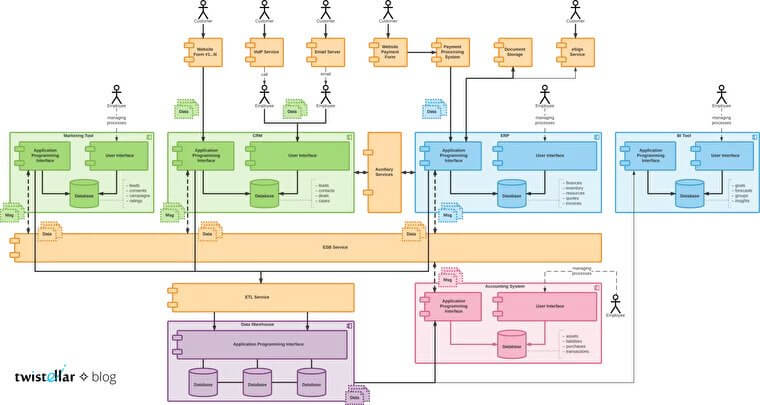
Typical Stages of Salesforce Integration
The full version was originally published at Twistellar
- Lack of unified information on customers as data is distributed among a variety of silos (systems);
- Uncoordinated departments that use different automation systems leading to intermittent customer service;
- There is no complete understanding of customer relations with the company, which impedes reaching the full potential of cooperation.
Stage 1 - Analyse
![]() Don't forget to check out: Getting started with Salesforce integration patterns using MuleSoft
Don't forget to check out: Getting started with Salesforce integration patterns using MuleSoft
Stage 2 - Localize & Replace
- Where does the company have to adjust its processes to the limitations of IT systems?
- Has the pace of any IT component become the blocker for organizational evolution?
- Are there any scaling or performance issues faced already or expected in the foreseen future?
Stage 3 - Connect
- Define the source of truth for all corporate data;
- Outline the data flows on the operational and managerial levels, build the needed metrics, reports, and dashboards for corporate management;
- Connect the business processes to achieve seamless internal and customer cooperation flows.
![]() Check out an amazing Salesforce Infographic here: 9 Ways Salesforce Brings Companies and Customers Together
Check out an amazing Salesforce Infographic here: 9 Ways Salesforce Brings Companies and Customers Together






Responses